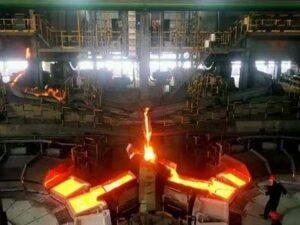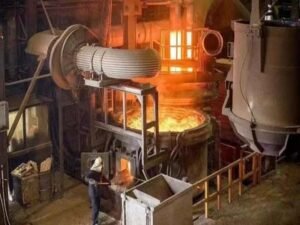Kilns for metallurgy and other purposes operate continuously at high temperatures for a long time, and refractory materials work in poor conditions and are easily damaged. , but they can be summarized as follows.

1. Slag erosion
Erosion caused by the physical and chemical action of slag and molten metal or dusty corrosive gases. According to statistics, 60%-70% of the linings of non-ferrous metallurgical kilns are damaged by slag erosion. For example, the slag line area of steelmaking converters and electric furnaces is the most severely damaged part mainly due to slag erosion.
2. The effect of drastic temperature changes
Many kilns often operate intermittently, and the temperature fluctuates greatly. Sudden changes produce great internal stress, masonry cracks and peels off, and in severe cases, deforms and collapses. For example, in steelmaking converters and electric arc furnaces, the temperature fluctuates too much in a short period of time during the smelting period and after slag discharge and steelmaking, causing the refractory materials to crack and peel off and be damaged.
3. Deposition of gas phase
Many smelting furnaces and flame furnaces produce CO (cobalt) decomposition and lead, zinc and alkali metal oxidation and volatilization during the production process, which are deposited in the pores and masonry joints of refractory materials, causing masonry cracking, deformation and chemical erosion. This phenomenon is more prominent in the upper part of blast furnaces, blast furnaces, coke ovens, etc.

4. Mechanical impact and wear
Many kilns have moving materials, such as the materials in blast furnaces continuously moving from the top of the furnace downwards; the materials in rotary kilns rotate and move forward. And while moving, the materials undergo a series of physical and chemical changes. Therefore, they have a great mechanical impact and severe abrasion on the furnace lining, which is very destructive.
5. Simple melting
Many refractory materials often undergo reburning line changes under high temperature heat load, causing masonry instability. Sometimes the operating temperature is too high, which can also cause local softening or even melting, forming molten droplets, leading to masonry collapse.
